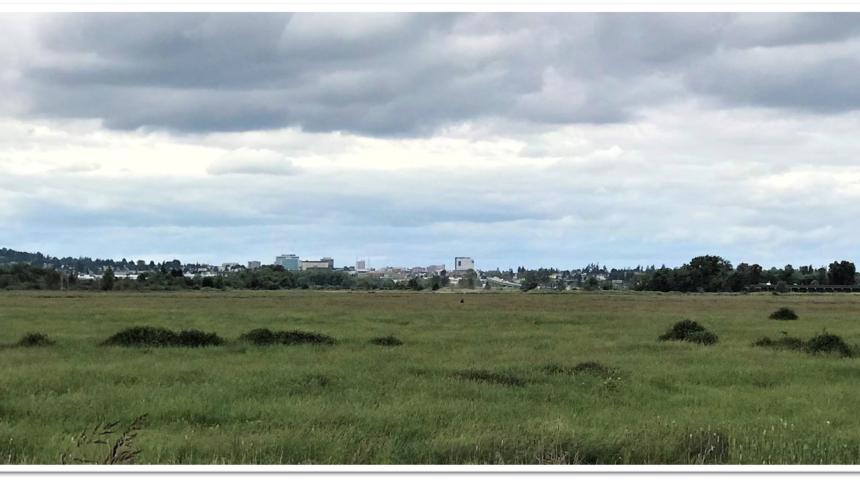Ebey Island is situated along the Highway 2 trestle bridge in the city of Everett. WDFW owns and manages 1,285 acres on Ebey Island, and it is a popular location for waterfowl and pheasant hunting as well as birding. Some of the property is also leased to local farmers to grow commercial crops and waterfowl forage.
In 2011, after acquiring a large piece of the current property, WDFW completed a feasibility study to determine how possible it would be to restore the property back to tidal marsh. The study found that while technically possible, tidal restoration will need to occur on a longer timeframe due to economic and social constraints. Since then, WDFW has implemented some public access, recreation, and habitat improvements but there is still opportunity for significant improvement.
While tidal restoration of Ebey Island for salmon recovery is still the long-term goal, WDFW is gathering stakeholder and Tribal input to determine what changes should be made on site to make it more valuable for people and wildlife in the next 10 years.
WDFW held an information webinar in November 2022 for more information about the Ebey Island Wildlife Area Unit Management Plan. Reference the recording and meeting presentation (PDF).
Project benefits
From November 2022 through April 2023, WDFW discussed how to make Ebey Island more valuable for wildlife habitat and for recreational interests such as bird and wildlife watching, trail walking, hunting, and others. A management plan has been released that will include proposed changes on site and predicted benefits for wildlife and people.
The goal of the management plan is to address multiple benefits including increased public access, enhanced wildlife habitat, improved on-site recreation, and environmental education opportunities.
Project details
Partners involved
Many organizations were involved in the creation of the management plan including Ducks Unlimited, Pilchuck Audubon, Snohomish Conservation District, Washington Water Trails, Snohomish County, Washington State Department of Transportation, and Washington State Department of Natural Resources. The Snoqualmie Wildlife Area Advisory Committee helped guide the process and will help guide implementation. We are also working closely with our tribal co-managers at the Tulalip Tribes.
Project funding
The facilitation of the planning process that guided the Management Plan was part of a package funded by NOAA's Community-Based Restoration grant, and WDFW's Estuary and Salmon Restoration Program.
Contact
Contact information
For more information, please contact:
Lindsey Desmul
lindsey.desmul@dfw.wa.gov
(206) 496-9142
